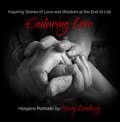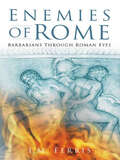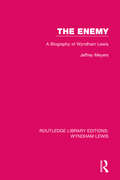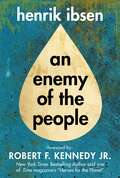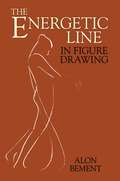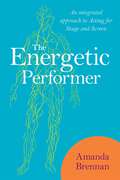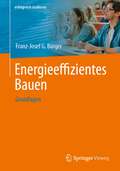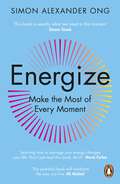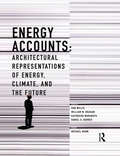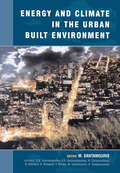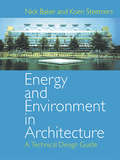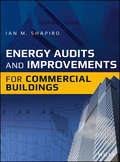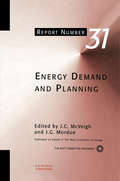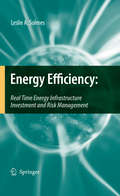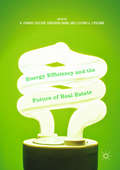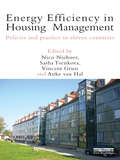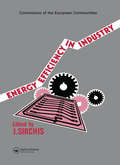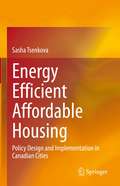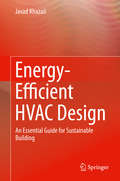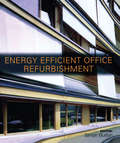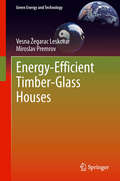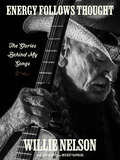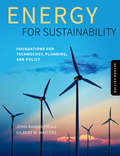- Table View
- List View
Enduring Love
by Mary LandbergAs a hospice nurse and photographer, Mary Landberg has the honor to witness and capture in photographs the unwavering expression of love that endures between people living with terminal illness and their loved ones. She has had the privilege of bringing her camera into a most sacred and vulnerable time in peoples lives.The great similarity in the dying process regardless of economic status, age, or any cause or place of death is the way people lovingly touch each other. Love is what survives beyond the last breath; love is all that is left in the end. This is what Landberg strives to photograph.What sets Enduring Love apart from other hospice photography books is that the primary focus is not on the faces of hospice patients, but on their hands. The mystery of who belongs to the hands allows the hands to belong to anyone in the reader's life, perhaps offering a sense of comfort or completion.Each photograph is accompanied by a story, grand wisdom hospice patients and families offer us the readers. The reader will also find honest glimpses into hospice care, common family struggles, light-hearted moments in the face of death and opportunities for healing on many levels.
Enemies of Rome: Barbarians Through Roman Eyes
by Iain FerrisThe artists of Ancient Rome portrayed the barbarian enemies of the empire in sculpture, reliefs, metalwork and jewellery.Enemies of Rome shows how the study of these images can reveal a great deal about the barbarians, as well as Roman art and the Romans view of themselves.
The Enemy: A Biography of Wyndham Lewis (Routledge Library Editions: Wyndham Lewis #1)
by Jeffrey MeyersOriginally published in 1980 and nominated for the Duff Cooper Prize, this was the first biography of Wyndham Lewis and was based on extensive archival research and interviews. It narrates Lewis’ years at Rugby and the Slade, his bohemian life on the Continent, the creation of Vorticism and publication of Blast, and his experiences at Passchendaele, as well as his many love affairs, his bitter quarrels with Bloomsbury and the Sitwells, the suppressed books of the thirties, the evolution of his political ideas, his self-imposed exile in North America and creative resurgence during his final blindness. Jeffrey Meyers also describes Lewis’ relationships with Roy Campbell, D. H. Lawrence, Katherine Mansfield, T. E Lawrence, Hemingway, Huxley, Yeats, Auden, Spender, Orwell and McLuhan. As the self-styled Enemy emerges from the shadows, he is seen as an independent and courageous artist and one of the most controversial and stimulating figures in modern English art and literature.
Enemy of the People: A Play In Five Acts
by Henrik IbsenEnvironmentalist, activist, and attorney Robert F. Kennedy Jr. contributes a foreword to this Skyhorse edition of Norwegian playwright Henrik Ibsen&’s renowned 1882 play. Regarded as one of the foremost playwrights of the nineteenth century, Henrik Ibsen tells the story of the idealist Doctor Thomas Stockmann, the medical officer of a recently opened spa in a small town in southern Norway, who finds that the water is seriously contaminated. He notifies members of the community and initially receives support and thanks for the discovery. Threatened by the possible impact of such a revelation, his brother, the town mayor, conspires with local politicians and the newspaper to suppress the story and pressure Dr. Stockmann to retract his statements. At a public meeting, an attempt is made to keep Dr. Stockmann from speaking, but he launches into a tirade condemning the corruption of the town and the tyranny of the majority. Finding his speech offensive, he is shouted down by the masses and reviled as "an enemy of the people." In his foreword, Kennedy alerts readers to the undeniable fact that the persecution of those who tell uncomfortable truths, which Ibsen described over one hundred years ago, continues to this day and is as relevant now as ever. We face environmental deregulation and degradation, politicians in lobbyists&’ pockets, attacks on facts that are agreed upon by reputable scientists, corporate funded and controlled research, and attempts to impede and suppress whistleblowers. The battle continues and Kennedy joins Ibsen on the front lines.
The Energetic Line in Figure Drawing
by Alon BementWell-crafted and class-tested, this guide to figure drawing features a unique teaching method. It focuses on learning to draw complete figures prior to the study of individual components, and it stresses action figures rather than the customary static examples favored by most drawing and anatomy texts. Employing more text than typical art instruction books, it presents thirty figure drawing lessons and fifty-six drawings and figures. Each lesson includes detailed instructions on anatomical drawing, accompanied by visual examples of strokes, boxes, and measurements. Author Alon Bement taught art instruction to future art teachers at Columbia University and later founded the prestigious Maryland Institute of Art. His students included Georgia O'Keeffe, who regarded him as a mentor and major influence. Bement's nontraditional approach offers students at all levels an excellent opportunity to build their visual acuity and technical skills.
The Energetic Performer: An Integrated Approach to Acting for Stage and Screen
by Amanda BrennanA new approach to actor training by a senior teacher, this illustrated manual shows how to use the body to produce rich, varied and truthful performances. The approach, rooted in the Michael Chekhov Technique, integrates ancient Qigong knowledge with somatic psychology and western actor training methods to identify the links between physical shape, emotion and feeling in performance. Supporting and illustrating the text, extensive practical exercises developed through actor training classes provide techniques to tune and adapt the body in preparation for creative work. This book will enhance your understanding of the actor's craft, offering the opportunity to grow and advance your pre-existing skills. Warm ups and sequences of exercises will enable you to implement and fully understand this innovative approach. All of the work can be applied to live and screen performances.
Energieeffizientes Bauen: Grundlagen (erfolgreich studieren)
by Franz-Josef G. BürgerDer Arbeitsbereich des „Energieeffizienten Bauens“ bietet eine gute Zukunftsperspektive. Die fachliche Auseinandersetzung mit dem Thema „Energieeffizientes Bauen“ erfordert interdisziplinäres Arbeiten. Architekten und Bauingenieure werden bei der Planung und Ausführung der gebäudetechnischen Einrichtungen zunehmend mit den Aufgabenstellungen des Maschinenbaus und der Elektrotechnik konfrontiert. Die Buchinhalte beschreiben die naturwissenschaftlichen Grundlagen für die richtige Wahl der Baumaterialien und Baukonstruktionen im Hinblick auf Energieeffizienz, Nachhaltigkeit und Methoden zur Wirtschaftlichkeitsbetrachtung. Aufgaben am Ende der Kapitel ermöglichen die Selbstkontrolle und Festigung des angeeigneten Wissens.
Energize: Make the Most of Every Moment
by null Simon Alexander OngWinner of the 2023 Business Book Award for Wellness and Wellbeing'This book is exactly what we need in this moment' Simon Sinek, author of Start With Why'Learning how to manage your energy changes your life. Don't just read this book, do it!' Marie Forleo, author of Everything is FigureoutableIn Energize, award-winning life coach Simon Alexander Ong introduces you to the art and science of energy management. In a world where we are always on, Ong coaches you to work with your natural energy resources to recognize your most energized state - when to push and when to recoup - so that you can work sustainably towards your biggest goals.You'll learn how to:- Speak less and listen more- Stop treating your health as a side hustle- Silence your inner critic and listen to your inner guide instead- Progress faster by saying no to the activities that are holding you backIt's time to find out what you can achieve when you feel energized.'Simon provides practical advice to help you achieve your full potential in every area of your life. Exceptional!' Dr Marshall Goldsmith, author of Triggers'Learning how to energize ourselves is key to being happy and successful' Shaa Wasmund MBE, author of How to Fix Your Sh*t
Energy Accounts: Architectural Representations of Energy, Climate, and the Future
by Michael MannHow does one tell the story of energy production, use, or conservation in a manner sufficiently convincing to influence policy, behavior, and design? Energy Accounts explores potential answers to this question through compelling images, data visualizations, narratives, and other examples of accounting for energy. Organized into a collection containing both examples of best practices and critiques, this impressive array of projects and contributors combines text and graphic material to explore different representations of energy data. Including work from Kieran Timberlake, SHoP, AMO, Lateral Office, WOHA, and many more, the book boasts a unique graphic design which supports and enhances its role as a valuable resource for professionals and students in architecture, engineering, and urban design.
Energy and Climate in the Urban Built Environment: Energy And Climate In The Urban Built Environment (BEST (Buildings Energy and Solar Technology))
by D. N. Asimakopoulos V. D. Assimakopoulos N. Chrisomallidou N. Klitsikas D. Mangold P. Michel M. Santamouris A. TsangrassoulisBoth the number and percentage of people living in urban areas is growing rapidly. Up to half of the world's population is expected to be living in a city by the end of the century and there are over 170 cities in the world with populations over a million. Cities have a huge impact on the local climate and require vast quantities of energy to keep them functioning. The urban environment in turn has a big impact on the performance and needs of buildings. The size, scale and mechanism of these interactions is poorly understood and strategies to mitigate them are rarely implemented. This is the first comprehensive book to address these questions. It arises out of a programme of work (POLISTUDIES) carried out for the Save programme of the European Commission. Chapters describe not only the main problems encountered such as the heat island and canyon effects, but also a range of design solutions that can be adopted both to improve the energy performance and indoor air quality of individual buildings and to look at aspects of urban design that can reduce these climatic effects. The book concludes with some examples of innovative urban bioclimatic buildings. The project was co-ordinated by Professor Mat Santamouris from the University of Athens who is also the editor of the book. Other contributions are from the University of Thessaloniki, Greece, ENTPE, Lyons, France and the University of Stuttgart, Germany.
Energy and Environment in Architecture: A Technical Design Guide
by Nick Baker Koen SteemersA unique and revolutionary text which explains the principles behind the LT Method (2.1), a manual design tool developed in Cambridge by the BRE. The LT Method is a unique way of estimating the combined energy usage of lighting, heating, cooling and ventilation systems, to enable the designer to make comparisons between options at an early, strategic stage.In addition,Energy and Environment in Architecture the book deals with other environmental issues such as noise, thermal comfort and natural ventilation design. A variety of case studies provide a critique of real buildings and highlight good practice. These topics include thermal comfort, noise and natural ventilation.
Energy Audits and Improvements for Commercial Buildings
by Ian M. ShapiroThe Intuitive Guide to Energy Efficiency and Building Improvements Energy Audits and Improvements for Commercial Buildings provides a comprehensive guide to delivering deep and measurable energy savings and carbon emission reductions in buildings. Author Ian M. Shapiro has prepared, supervised, and reviewed over 1,000 energy audits in all types of commercial facilities, and led energy improvement projects for many more. In this book, he merges real-world experience with the latest standards and practices to help energy managers and energy auditors transform energy use in the buildings they serve, and indeed to transform their buildings. Set and reach energy reduction goals, carbon reduction goals, and sustainability goals Dramatically improve efficiency of heating, cooling, lighting, ventilation, water and other building systems Include the building envelope as a major factor in energy use and improvements Use the latest tools for more thorough analysis and reporting, while avoiding common mistakes Get up to date on current improvements and best practices, including management of energy improvements, from single buildings to large building portfolios, as well as government and utility programs Photographs and drawings throughout illustrate essential procedures and improvement opportunities. For any professional interested in efficient commercial buildings large and small, Energy Audits and Improvements for Commercial Buildings provides an accessible, complete, improvement-focused reference.
Energy Demand and Planning
by J. C. McVeigh J. G. MordueEnergy, Demand and Planning brings together a group of distinguished authors from many relevant disciplines, under the auspices of the Watt Committee on Energy. The authors were asked to consider the effects of policy decisions that might be taken now on the planning of the world energy industries in the coming half-century or so. Discussion is hel
Energy Efficiency: Real Time Energy Infrastructure Investment and Risk Management
by Leslie A. SolmesENERGY EFFICIENCY uses an applied scientific methodology and case studies to demonstrate and support: The need for the U.S. and the world to commit to energy and resource efficiency as the central goal in investing in electric, heat, and cooling infrastructure, the huge economic opportunity for using the inefficiency built into 20th century energy supply systems, especially, electric, to pay for the upgrades, replacements, and new production and distribution systems of the 21st century, the importance of adopting a standard, web-based energy infrastructure investment decision-making and risk management tool that will serve as a communication medium for all stakeholders to evaluate and compare energy infrastructure investment options and manage investment risks, expansions of the U.S. 'smart' grid investment to include evaluation and risk management of energy systems infrastructure investments not just electricity operations, the need to adopt a 'framework' for utilities, energy service companies, and customers to work together to close business deals, communicate and manage risks, and realize profits.
Energy Efficiency and the Future of Real Estate
by Yongsheng Wang N. Edward Coulson Clifford A. LipscombThis book explores how energy efficiency is a major component in the development of sustainable real estate. Efficiency is one of the most frequently-mentioned aspects of government policies for green building design in the United States and around the world. There has been a significant amount of effort devoted to the creation of green practices in real estate, including building construction, building assessment, city planning, investment, governmental regulation and policies, and industrial development. One of the key emphases of the above activities is energy efficiency, thus it is crucial for researchers and readers to have a comprehensive overview of the topic, as this book provides.
Energy Efficiency in Housing Management: Policies and Practice in Eleven Countries
by Vincent Gruis Sasha Tsenkova Nico Nieboer Anke Van HalThe embedding of energy efficiency in the management of individual housing organisations is crucial for the realization of current ambitious energy efficiency policies. This issue is examined for the first time in this book through an analysis of selected case studies in new ‘green’ buildings, as well as in the retrofitting of existing housing, maintenance and budgeting. The links between policy ambitions, practice and housing management institutions are given particular attention. Thus the book is primarily concerned with how ambitions about energy efficiency are carried forward in investment decisions at the housing estate level. Technical and financial issues relevant for this are also addressed. The editors combine a wealth of experience in comparative research on housing policy and housing management with a strong academic background in housing studies and economics. The book aims to be internationally comparative including a range of countries. A chapter will be devoted to each of the following countries:- Sweden; Denmark; Germany; the Netherlands; England; France; Switzerland; Austria; Czech Republic; Slovenia; Canada. The book will appeal to a large audience of students and academics who are concerned with housing issues, urban policy and politics as well as to those engaged in research in energy efficiency policies in the built environment.
Energy Efficiency in Industry
by J. Sirchis Maria E. JohnsonProceedings of a workshop organized by the Commission of the European Communities, Directorate-General for Energy, Berlin, Germany, 19-20 October 1987.
Energy Efficient Affordable Housing: Policy Design and Implementation in Canadian Cities
by Sasha TsenkovaThis book provides the first comparative assessment of the energy-efficiency retrofit programs in the social housing sector of Canadian cities, focusing on program efficiency and effectiveness. The analytical framework explores key policy instruments - regulatory, fiscal and institutional - in relation to major results achieved. The approach is interdisciplinary, supported by rich empirical data from case studies, observations and interviews. The book explores important strategies for the provision of green and affordable housing, while addressing climate change imperatives and resilience issues. This is of great interest to researchers, policy makers, city leaders, professionals and students. Its value added contribution to scholarship is complemented by practical relevance for social housing organisations in countries with a small residual housing sector. It offers valuable lessons for the design, planning and implementation of energy retrofit programs in North America and beyond.
Energy Efficient Building Design
by Ana-Maria DabijaThis book is the result of recent research that deals with the built environment and innovative materials, carried out by specialists working in universities and centers of research in different professional fields ─ architecture, engineering, physics ─ and in an area that that spans from the Mediterranean Sea to the Persian Gulf, and from South Eastern Europe to the Middle East. This book takes the necessity of re-shaping the concept of building design in order to transform buildings from large scale energy consumers to energy savers and producers into consideration. The book is organized in two parts: theory and case studies. For the theoretical part, we chose from the wide range of sources that provide energy efficient materials and systems the two that seem to be endless: the sun and vegetation. Their use in building products represents a tool for specialists in the architectural design concept. The case-studies presented analyze different architectural programs, in different climates, from new buildings to rehabilitation approaches and from residential architecture to hospitals and sports arenas; each case emphasizes the interdisciplinarity of the building design activity in order to help readers gain a better understanding of the complex approach needed for energy efficient building design
Energy-Efficient HVAC Design
by Javad KhazaiiThis book provides readers with essential knowledge enabling the successful design of today's new energy efficient HVAC systems. The author introduces important concepts such as Knowledge Categorization, Performance Based Design Standards, and Quantification of Uncertainty in Energy Modeling for Buildings. Pivotal topics that all HVAC and architectural engineers must master in order to navigate the green building renaissance are given focused attention, including the role of renewables, air quality, automatic controls, and thermal comfort. Relevant ASHRAE standards, as well as sustainability scoring systems such as BREEAM, HQE, LEED and CASBEE are explained in depth. Armed with the material contained in this practical reference, students and practitioners alike will become more effective and prepared for engineering success.
Energy-efficient Office Refurbishment: Designing for Comfort
by Simon Burton Marco SalaLittle has been published on the subject of energy-efficient refurbishment of offices, despite the growing need to refurbish older office building stock throughout Europe, and the global requirement to conserve energy. The book suggests the most energy efficient and environmentally friendly way to refurbish offices using examples of real buildings and designs wherever possible. Each case study includes a building description, the retrofitting strategy, passive and low energy technologies used, energy assessment, comfort and environment assessment, financial assessment, client and market assessment, and conclusion. This practical design manual will be invaluable for architects and engineers specialising in the refurbishment of commercial buildings.
Energy-Efficient Timber-Glass Houses
by Vesna Žegarac Leskovar Miroslav PremrovThe book discusses combining timber and glass, two eco materials, with a view to developing an optimal contemporary energy-efficient house with an attractive design. Furthermore, the book connects an architectural design approach with structural research to show the possibilities of stabilizing the building with an increased size of the glazing. Research results where the glazing is considered as a load-bearing structural element are therefore presented in a manner leading to the development of an optimal model of the timber-glass house, considering both the structural and energy related aspects. The presented research work can be useful to designers and future experts in their planning of optimal energy-efficient timber buildings. The study is based on using timber and glass, which were previously neglected as construction materials. With suitable technological development and appropriate use, they are nowadays becoming essential construction materials as far as energy efficiency is concerned. However, their combined use is extremely complicated, from both the constructional point of view as well as from that of energy efficiency and sets multiple traps for designers. A good knowledge of their advantages and drawbacks is thus vitally important, which is shown in the present monograph. Energy-efficient timber-glass houses was selected by the Slovenian National Research Agency as an extraordinary scientific achievement in the field of technical sciences/civil engineering for the year 2013.
Energy Follows Thought: The Stories Behind My Songs
by Willie Nelson David Ritz Mickey RaphaelRevealing, funny, whimsical, and wise, outlaw country legend Willie Nelson shares the untold stories behind the his favorite songs, with all the lyrics and a dynamic assortment of never-before-seen photos and ephemera.From his earliest work in the 1950s to today, Willie looks back at the songs that have defined his career, from his days of earning $50 each to his biggest hits, from his less well-known songs (but incredibly meaningful to him) to his concept albums. Along the way, he also shares the stories of his guitar Trigger, his family and “family,” as well as the artists he collaborated with, including Patsy Cline, Waylon Jennings, Ray Charles, Merle Haggard, Ray Price, Dolly Parton, and many others.Willie is disarmingly honest—what do you have to lose when you’re about to turn 90? —meditating on the nature of songwriting and finding his voice, and the themes he’s explored his whole life—relationships, infidelity, love, loss, friendship, and, of course, life on the road.
Energy for Sustainability, Second Edition: Foundations for Technology, Planning, and Policy
by Gilbert M. Masters John RandolphThe most comprehensive textbook on this topic,Energy for Sustainability, Second Editiontakes a holistic and interdisciplinary approach to help techies and policymakers alike understand the policy and social mechanisms required to enable conversion to efficient and renewable energy that is clean, affordable, and secure. Major revisions to this edition reflect the current changes in technology and energy use and focus on new analyses, data, and methods necessary to understand and actively participate in the transition to sustainable energy.Throughout the book, analytical methods for energy and economic analysis and design give users a quantitative appreciation for and understanding of energy systems. Randolph and Masters use case studies extensively to demonstrate current experience and illustrate possibilities.
Energy from the Biomass: Third EC conference
by W. Palz J. Coombs D. O. HallThis book is based on third European Conference on Energy from Biomass held in Venice. It covers energy security, environmental aspects, relieving the overproduction in some agricultural sectors and creation of jobs in rural areas.
